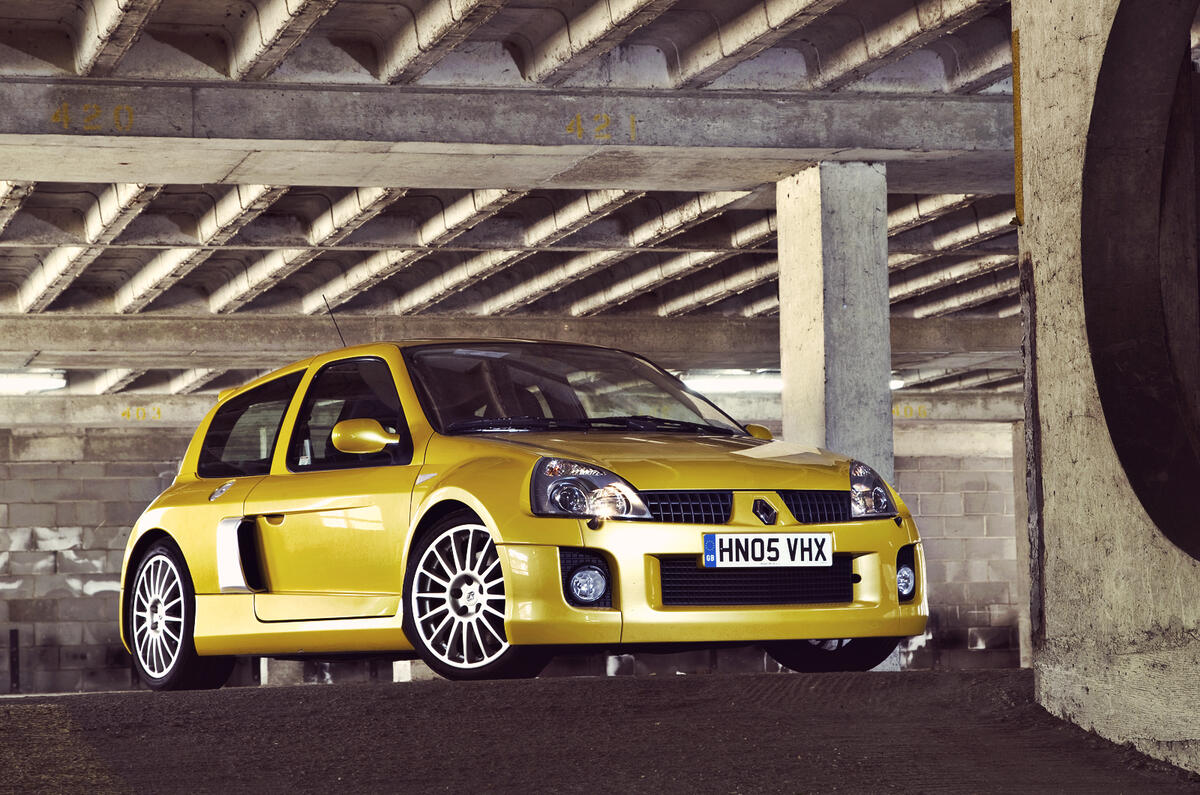Prior to borrowing Renault’s immaculate Renault Clio V6, I’d seen one on the road three times. Once on the M25 near Brentwood; once was, I think, on the A243 going past Chessington World of Adventures, and the other time it was Renault’s own car again on an earlier visit to Autocar HQ.
Anecdotally, then, they’re rare. And rare in fact too because according to the internet, less than 250 were registered in the UK last year. Which means you’ve got more chance of coming across a Ferrari 599 GTB.
Rarity has a way of making something covetable of course, yet that hardly accounts for all the affection lavished on the car by passers-by. Yes, it’s still a sight to see - nearly ten years spent off the shelf has not made the bulging arches or sills seem any less outlandish - but I prefer to think all the smiles and thumbs-up are a salute to the outright silliness (and therefore, innate brilliance) of the thing.
Ripping up and rebuilding the humble Clio as mid-engined, rear drive coupe still feels like the automotive equivalent of motorizing a pogo stick: it was fine before, fun even - it’s now unapologetically bonkers. And all the better for it. To drive, the V6 remains a singular steer: possessing an almost unique combination of an unweighted nose, dinky wheelbase, low weight, slow steering and a 252bhp powered, pre-loaded backend. I owned a 172 Cup of the same vintage, and the similarities end at the dash layout.
The car is all the more remarkable for the fact that Renault needed a second go to get it right - the first version famously proving too wayward in the wet for some buyers. What we wouldn’t give to have been present at either meeting: first to watch the French execs merrily green light the notion of a hand-built, V6 powered Clio with no boot, and the second to see them convinced that the zany concept still had legs if only the engineers could dial in enough understeer for it not to fall off roundabouts quite so easily.
Such controversial decisions seem less and less likely now. Manufacturers have no problem whatsoever with extracting ever greater outputs from a hatchback’s engine bay - the Mercedes A45, for example, has more power than a 1995 Porsche 911 Carrera RS - so long as said engine remains firmly at the front and the car in question rolls down the same production line as everything else. The idea of dramatically tinkering with architecture for anything low volume, or even moderately fettling something a little bit special away from the factory, is now considered industrial kryptonite.
Such adamancy puts paid to the idea of any mainstream brand following up the V6 with anything quite as willfully eccentric. Although if there are any disco lights at the end of the current tunnel, they surely still belong to Renault. Not in Clio costume of course - that damp squib has sailed - but rather in the new Twingo, which for packaging reasons, adopts a similarly unconventional rear-engined, rear drive layout.
Encouragingly, the company didn’t even wait for the standard model to be launched before it showed off the Twin’Run - a, yes, V6-powered concept built mostly from motorsport bits. No one’s suggesting that car is anything other than hat-tipping exhibition piece, but let’s hope that any forthcoming Renaultsport version of the Twingo (denied, yet widely forecast) captures some of the unconventional verve of the Clio.
And then perhaps if we get excited enough, and hop from foot to foot with glee, Renault might just be tempted to start bouncing ideas off the wall at another of those long meetings.




Join the debate
Add your comment
V6 very rare, very nice
Fadyady, Indeed, and while
Making cars that stick in peoples minds is a great way to build a brand. It doesnt matter if few are brave enough to buy. Looking back at this, the Renaulsport Roadster, and Avantime it shows once they were brave. Now they darent even fit a manual box to a hot hatch. If the current Clio RS is remembered it will be for all the wrong reasons
Eh nope?!
@ Peter
If only there had been some sort of clue in the article...
"The car is all the more remarkable for the fact that Renault needed a second go to get it right - the first version famously proving too wayward in the wet for some buyers."